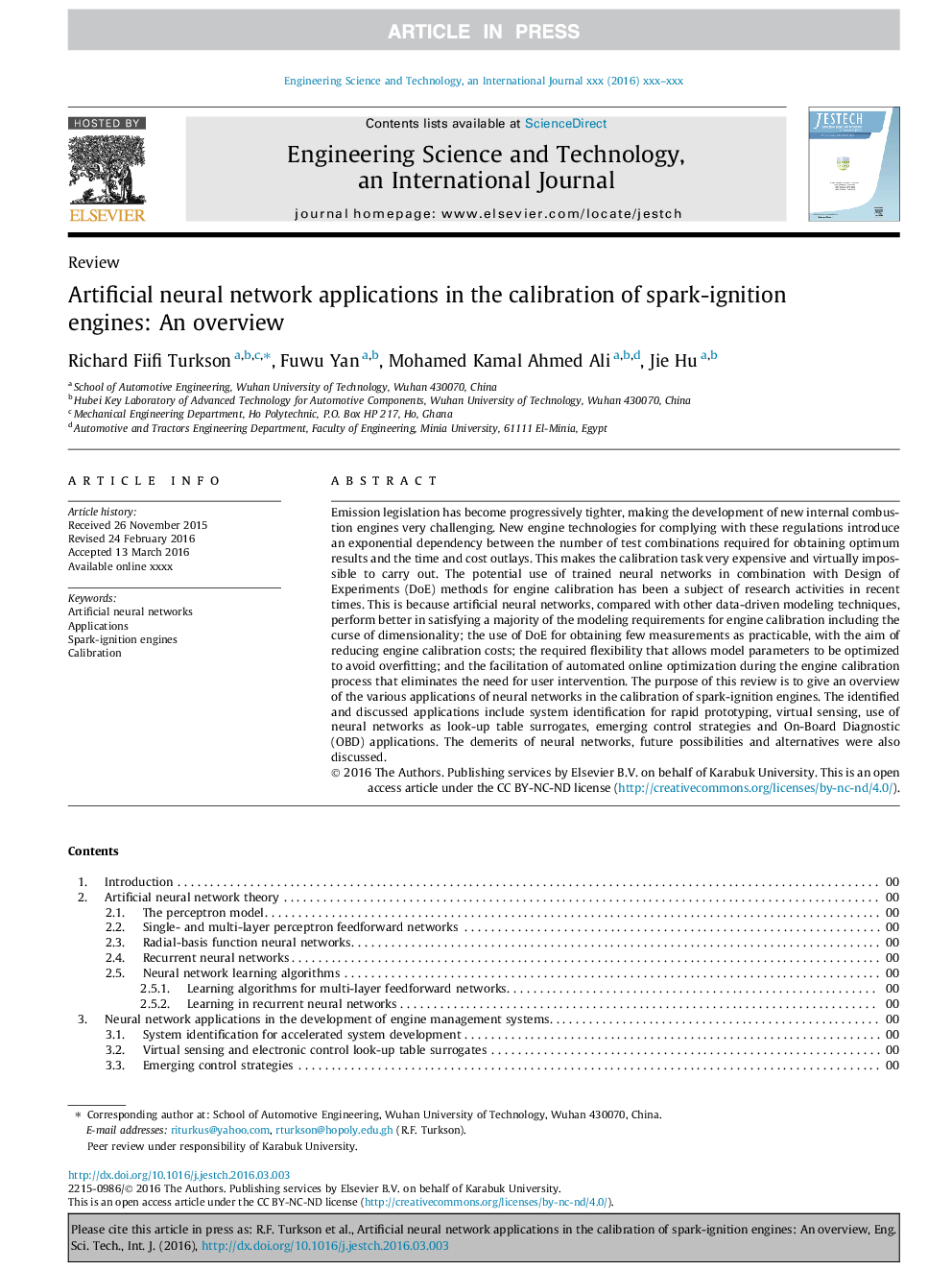| Article ID | Journal | Published Year | Pages | File Type |
|---|---|---|---|---|
| 6894318 | Engineering Science and Technology, an International Journal | 2016 | 14 Pages |
Abstract
Emission legislation has become progressively tighter, making the development of new internal combustion engines very challenging. New engine technologies for complying with these regulations introduce an exponential dependency between the number of test combinations required for obtaining optimum results and the time and cost outlays. This makes the calibration task very expensive and virtually impossible to carry out. The potential use of trained neural networks in combination with Design of Experiments (DoE) methods for engine calibration has been a subject of research activities in recent times. This is because artificial neural networks, compared with other data-driven modeling techniques, perform better in satisfying a majority of the modeling requirements for engine calibration including the curse of dimensionality; the use of DoE for obtaining few measurements as practicable, with the aim of reducing engine calibration costs; the required flexibility that allows model parameters to be optimized to avoid overfitting; and the facilitation of automated online optimization during the engine calibration process that eliminates the need for user intervention. The purpose of this review is to give an overview of the various applications of neural networks in the calibration of spark-ignition engines. The identified and discussed applications include system identification for rapid prototyping, virtual sensing, use of neural networks as look-up table surrogates, emerging control strategies and On-Board Diagnostic (OBD) applications. The demerits of neural networks, future possibilities and alternatives were also discussed.
Related Topics
Physical Sciences and Engineering
Computer Science
Computer Science (General)
Authors
Richard Fiifi Turkson, Fuwu Yan, Mohamed Kamal Ahmed Ali, Jie Hu,
